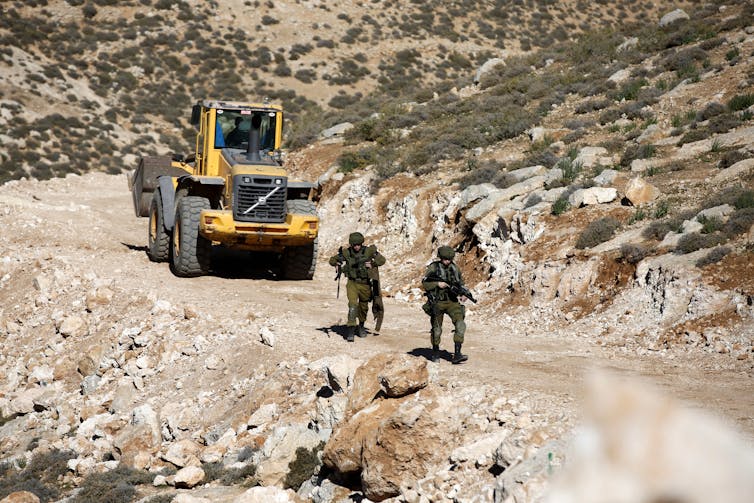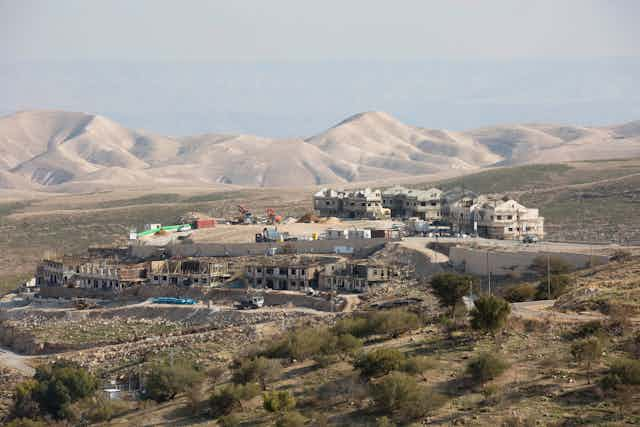Less than a month before the inauguration of Donald Trump, the outgoing US secretary of state, John Kerry, used a major speech on the Middle East to ask a highly sensitive question: “How does Israel reconcile a permanent occupation with its democratic ideals?”
Concerned that Israel’s occupation of the West Bank and Gaza Strip has become permanent, Kerry was mainly worried about the “character” of the Israeli state, highlighting that the elusive two-state solution is “the only way to ensure Israel’s future as a Jewish and democratic state, living in peace and security with its neighbours”.
The implicit assumption is that Israel, which is constitutionally self-defined as “Jewish and democratic”, is a Western-style liberal democracy – at least within its 1967 borders, also known as the Green Line. The likes of Kerry apparently consider it problematic that millions of people live under supposedly “temporary” Israeli military occupation in the West Bank and Gaza, but they don’t seem to consider it a black mark on democracy in “Israel proper”.
In reality, however, the differences between the way Israeli governments treat Palestinians on each side of the 1967 line are usually differences of degree rather than kind, and it makes little sense to discuss Israel’s policies in the occupied West Bank as some kind of tangent. This is an artificial distinction, and it glosses over the character of many Israeli policies inside the Green Line. borders.
Demolition and displacement
Nothing demonstrates this better than Israel’s land and settlement policies. Starting in 1967, successive Israeli governments (both Labour and Likud) have implemented policies to establish settlements/colonies in the West Bank, including East Jerusalem, and they have explicitly encouraged Jewish Israeli citizens to settle there. More than 600,000 Israelis have duly relocated to the West Bank over the years; the settlements have been treated as “National Priority Zones” and settlers given significant subsidies.
But these settlement drives were not part of a policy unique to the occupied terriroties; from the outset, they mirrored moves already underway in Israeli sovereign territory to establish exclusively Jewish towns on land expropriated from Palestinians with Israeli citizenship.
There’s a similar pattern when it comes to demolition. According to the United Nations, the Israeli army destroyed 1,089 Palestinian-owned structures in the West Bank in 2016, displacing 1,593 Palestinians and damaging the livelihoods of 7,101. The situation on the other side of the Green Line is not so different.
In 2012-2014, Israeli authorities issued 1,336 administrative demolition orders, around 97% of them against Palestinians, who make up 20% of Israel’s population. Some of the demolition orders targeted entire Palestinian villages, as in the case of the Bedouin village Um Al Heiran, whose residents have been told to vacate the land for the construction of a Jewish town. In January 2017 in the village of Qalansawah, 20 miles north of Tel Aviv, 11 Palestinian-owned houses were demolished in one day in a military-style operation involving 800 policemen. Israel’s prime minister, Benjamin Netanyahu, proudly announced the operation on his official Facebook page.

Beyond planning and land use, this sort of “mirroring” on either side of the line happens on all sorts of matters. A major one is access to water, where Israeli Jews on both sides of the 1967 line get preferential treatment over Palestinians, even those who hold Israeli citizenship.
This all throws up some awkward questions. Does the distinction between both sides of the 1967 line exist? Is the distinction real but imperfect, or something more cynical – a diplomatic device to skirt around inconvenient and unpleasant realities about Israel’s political system?
Real or not, the distinction between Israeli governments’ behaviour inside and outside the line has allowed successive administrations to have their cake and eat it too. They have enjoyed membership of the global club of democratic states even as they exerted control over the lives of millions of people with no voting rights and minimal human rights, staving off the worst sorts of international opprobrium by teasing the possibility of a future political resolution.
On the ground, the legal emphasis on the state’s so-called Jewish character translates into discriminatory laws and policies. Palestinians on both sides of the 1967 line continue to suffer, and tensions continue to rise.
As we enter the Trump era, this trend looks set to get stronger.
On board
Trump explicitly backs Israeli policies including settlement expansion – and with more than lip service: not only has he donated money to a settlement in the past, he has now appointed a pro-settlement ambassador to Israel. He is even apparently entertaining the highly provocative idea of moving the US Embassy from Tel Aviv to Jerusalem, even though most countries maintain that the status of Jerusalem should be decided as part of a peace agreement with the Palestinians.
Trump’s political preferences may already be affecting other states’ Middle East policies. Aligning itself with Trump, the UK refused to participate in a French-convened peace summit at the start of 2017 and blocked the adoption of the final statement by the EU even though the principles in the statement are identical to the UK’s stated foreign policy.
Trump’s rhetoric and policies might just expose the charade of the Green Line distinction and, by extension, start to change the way Israeli governments are assessed and discussed in the West. But blunt honesty about Israel’s discriminatory policies isn’t helpful if the speaker is sympathetic to what Israel is doing – and especially not if he’s president of the US.

